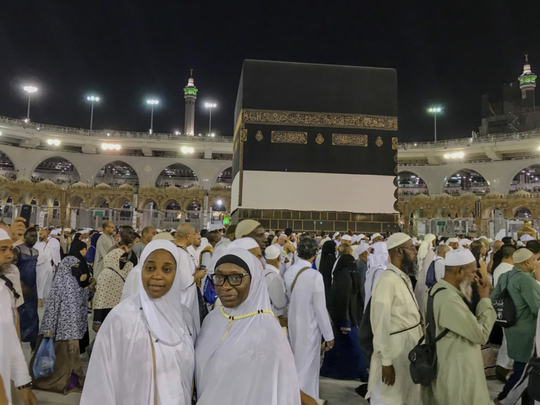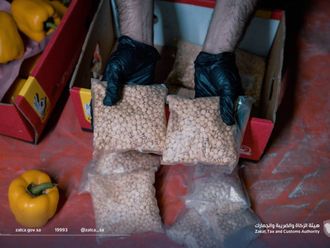
Makkah: Two million Muslims gather in Saudi Arabia this week for the Haj as the annual pilgrimage becomes increasingly hi-tech with apps to help the faithful navigate Islam’s holiest sites.
One of the five pillars of the world’s fastest-growing religion, the Haj is expected to draw two million people from around the globe this year.
By Thursday, more than 1.6 million people had already arrived in Saudi Arabia for the pilgrimage, which runs from Sunday to Friday.
Thousands could be seen arriving in Makkah, with groups from different countries wearing distinct colours to set them apart.
Some pilgrims pushed their elderly relatives on wheelchairs while others stopped to call family members back home on video chat or buy ice cream as temperatures soared above 40 degrees Celsius (104 Fahrenheit).
For many, it is their first time away from home.
Every Muslim is required to complete the Haj at least once in their lifetime if they have the means to do so.
Many were visibly moved to be so close to Islam’s holiest site - the Ka’aba, a black masonry cube in the centre of Makkah’s Grand Mosque.
“I feel as light as a feather,” said Senegalese Fame Diouf, who travelled from Amsterdam.
Laughing, she recounted the story of how she couldn’t stop crying near the Ka’aba.
“This was my dream from childhood,” said Raja Amjad Hussain, who made the trip to Makkah from Pakistan.
“I can’t explain. I have no words,” the 40-year-old told AFP.
“For many Muslims this is the big, the biggest, dream of life, to see Ka’aba and pray for yourself and the whole Muslim nation.”
No matter their race or nationality, for every pilgrim Haj begins with “ihram”, the donning of an all-white outfit.
For men, this is a seamless tunic worn over baggy pants; for women, a loose dress with only the face and hands exposed.
Pilgrims then perform rituals around the Ka’aba and on the Mount Arafat plain east of Makkah.
The Haj ends with Eid Al Adha, a three-day feast which starts with the “stoning of the devil”.
Eid Al Adha also includes the slaughter of sheep, with the meat distributed to Muslims in need.
The ritual symbolises Prophet Ibrahim’s willingness to sacrifice his son, Ismail, on the order of God.
The Haj presents the Saudi authorities with major logistical challenges.
The Pew Research Center says the number of Muslims in the world is expected to rise from 1.8 billion in 2015 to three billion in 2060.
Smart Haj
This year, the Saudis have launched a “smart Haj” initiative, with apps to help pilgrims with everything from travel plans to medical care.
Asefny, for example, is an app launched by Saudi Arabia’s Red Crescent to help pilgrims request emergency medical attention.
Authorities are able to locate those in need through the app.
The Saudi Haj ministry also runs the Manasikana app, which provides translation for pilgrims who do not speak Arabic or English.












